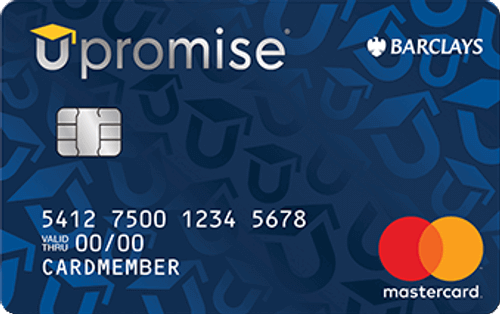Is Upromise Good for Paying Off Navient Student Loans?
If you’re struggling to make ends meet while paying off your Navient student loans, you’re not alone. The burden of student loan debt can be overwhelming, and it’s natural to seek out solutions that can help alleviate some of the financial stress. One option that has gained popularity in recent years is Upromise. But is it really good for paying off Navient student loans?
As a borrower, you’re probably eager to find a way to tackle your debt quickly and efficiently. The prospect of saving thousands of dollars on your loan balance can be especially enticing. But before you start using Upromise or any other repayment tool, it’s essential to understand how it works and whether it’s the right fit for your unique financial situation.
In this article, we’ll delve into the ins and outs of Upromise, exploring its benefits and limitations when it comes to paying off Navient student loans. By the end of this guide, you’ll have a better understanding of whether Upromise is the solution you’ve been searching for or if there are other options that might be more suitable for your needs.

Is Upromise Good for Paying Off Navient Student Loans?
If you’re struggling to make ends meet while paying off your Navient student loans, you’re not alone. The burden of student loan debt can be overwhelming, and it’s natural to seek out solutions that can help alleviate some of the financial stress [1]. One option that has gained popularity in recent years is Upromise. But is it really good for paying off Navient student loans?
As a borrower, you’re probably eager to find a way to tackle your debt quickly and efficiently. The prospect of saving thousands of dollars on your loan balance can be especially enticing. But before you start using Upromise or any other repayment tool, it’s essential to understand how it works and whether it’s the right fit for your unique financial situation [2].
In this article, we’ll delve into the ins and outs of Upromise, exploring its benefits and limitations when it comes to paying off Navient student loans. By the end of this guide, you’ll have a better understanding of whether Upromise is the solution you’ve been searching for or if there are other options that might be more suitable for your needs.
Struggling with Student Loan Payments?
See if You Qualify for Lower Payments & Better Rates – Speak with an Expert Now!
💬 Start Free ChatFAQs: Is Upromise Good for Paying Off Navient Student Loans?
-
Q: What is Upromise, and how does it work with Navient student loans?
A: Upromise is a rewards program that allows users to earn cash back on their purchases while paying off debt. When used in conjunction with Navient student loans, Upromise can help borrowers pay down their student loan balances faster. Borrowers can sign up for Upromise and link their Navient account to the platform, which will then track and reward purchases made through participating merchants.
-
Q: How much cash back can I earn with Upromise?
A: The amount of cash back earned through Upromise varies depending on the merchant and the type of purchase. On average, users can expect to earn around 1% to 5% cash back per transaction. While this may not seem like a lot, it can add up over time, especially for frequent shoppers.
-
Q: Are there any fees associated with using Upromise?
A: Yes, Upromise charges a small fee on the cash back rewards earned. The fee is typically around 1% to 2% of the total rewards amount. This means that if you earn $100 in cash back, you would lose about $1 to $2 due to the fee.
-
Q: Can I use Upromise to pay off my Navient student loans directly?
A: No, Upromise does not allow users to make direct payments towards their Navient student loans. Instead, the cash back rewards earned are credited to the user’s Upromise account, which can then be redeemed for gift cards or deposited into a linked bank account.
-
Q: Are there any other benefits to using Upromise with Navient student loans?
A: Yes, Upromise offers several additional benefits when used in conjunction with Navient student loans. For example, users can earn bonus rewards for referring friends and family to the platform, as well as access exclusive promotions and discounts from participating merchants.
In conclusion, Upromise can be a useful tool for paying off Navient student loans, but it’s essential to understand its benefits and limitations before deciding whether or not to use the platform. By earning cash back rewards on purchases and redeeming them for gift cards or deposits into a linked bank account, borrowers can potentially save thousands of dollars on their loan balance over time.
However, it’s crucial to consider the small fee associated with using Upromise, which may eat into the value of your rewards. Additionally, users should be aware that Upromise does not allow direct payments towards Navient student loans, instead crediting rewards earned to the user’s account for redemption or deposit.
Ultimately, whether or not Upromise is good for paying off Navient student loans depends on individual financial situations and goals. Borrowers who are disciplined about tracking their spending and can maximize their cash back earnings may find that Upromise is a valuable tool in their debt repayment arsenal. On the other hand, those who struggle with impulse purchases or have limited opportunities to earn rewards may not see significant benefits from using the platform.
As with any financial decision, it’s essential to weigh the pros and cons of using Upromise with Navient student loans carefully before making a commitment. By doing so, borrowers can make informed decisions about their debt repayment strategies and work towards achieving their long-term financial goals.
The effects of the passage of 111 in Colorado on payday loans: Discover how changes to state laws can impact your access to emergency cash. Learn more about the implications for borrowers and lenders.

